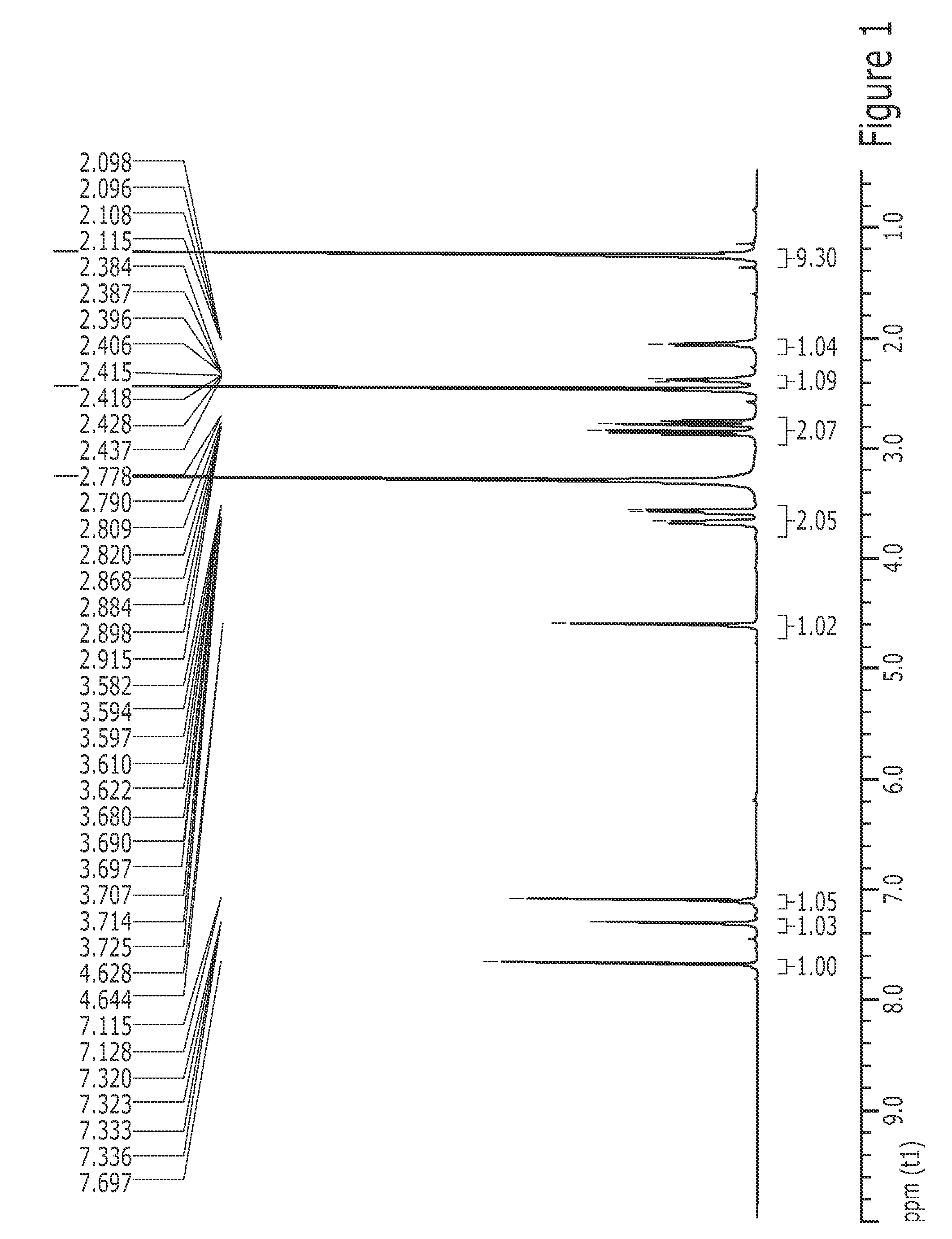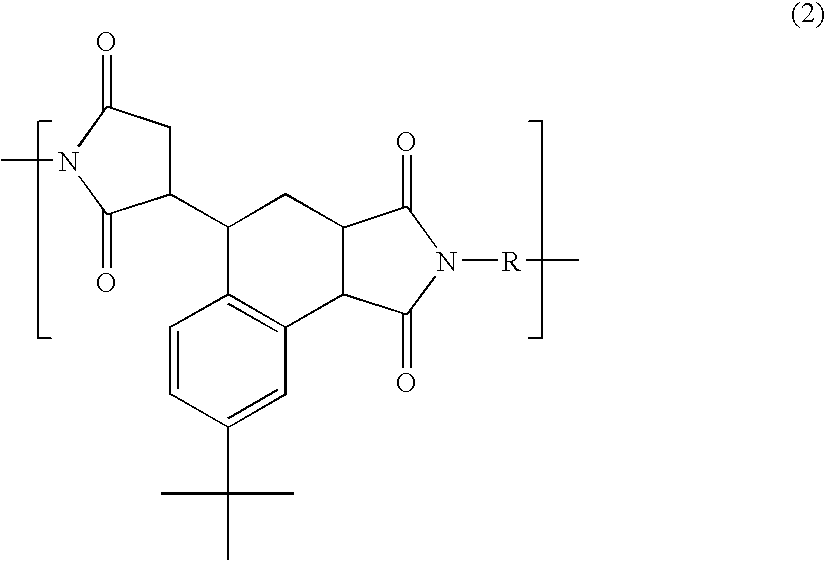3,4-dicarboxy-1,2,3,4-tetrahydro-6-t-butyl-1-naphthalene-succinic dianhydride and liquid crystal aligning agent comprising polyimide resin prepared from the dianhydride
a technology of succinic dianhydride and dicarboxyl, which is applied in the direction of organic chemistry, chemistry apparatus and processes, transportation and packaging, etc., can solve the problem that large amounts of low surface tension non-solvents cannot be introduced to improve the printability of aligning agents, and achieve excellent electrical properties, increase wash stability, and good printability
- Summary
- Abstract
- Description
- Claims
- Application Information
AI Technical Summary
Benefits of technology
Problems solved by technology
Method used
Image
Examples
example 1
[0048]100 parts by weight of maleic anhydride, 12 parts by weight of benzene and 0.8 parts by weight of tolylhydroquinone are put into a reactor equipped with an agitator, a thermometer and a reflux condenser. The mixture is heated to about 120° C. and then 208 parts by weight of 4-tert-butylstyrene is slowly added thereto. After completion of the addition, the resulting mixture is refluxed at 120° C. for a total of 6 hours and 300 parts by weight of benzene is added thereto. The reaction mixture is cooled to room temperature and filtered, yielding TTDA in a yield of 60%. The product is found to have a melting point of 199-202° C. The structure of the product is identified by 1H-NMR spectroscopy (FIG. 1).
example 2
[0049]0.95 moles of phenylenediamine and 0.05 moles of N-3,5-diaminophenyl-3-dodecylsuccinimide are put into a four-neck flask equipped with an agitator, a thermostat, a nitrogen injection system and a condenser under a stream of nitrogen gas. The mixture is dissolved using N-methyl-2-pyrrolidone (NMP). To the solution are added 0.6 moles of TTDA prepared in Example 1 and 0.4 moles of 1,2,3,4-cyclobutanetetracarboxylic dianhydride (CBDA), followed by vigorous stirring. The mixture is measured to have a solids content of 15 wt %. The mixture is allowed to react for 24 hours while maintaining the temperature at 30° C. to prepare a solution of polyamic acid (PA-1). 3.0 moles of acetic anhydride and 5.0 moles of pyridine are reacted with the polyamic acid at 80° C. for 6 hours. The reaction mixture is distilled ill vacuo to remove the catalyst and the solvents, yielding a soluble polyimide (PI-I). The polyimide is found to have a solids content of 30% and a number average molecular weig...
example 3
[0051]A soluble polyimide (PI-2) is prepared in the same manner as in Example 2 except that 0.85 moles of phenylenediamine and 0.15 moles of N-3,5-diaminophenyl-3-dodecylsuccinimide are used. The soluble polyimide is found to have a number average molecular weight of 120,000 g / mol, as determined by gel-permeation chromatography (GPC). A solution for the formation of an alignment layer is prepared using the soluble polyimide in accordance with the procedure described in Example 2.
PUM
| Property | Measurement | Unit |
|---|---|---|
| mol % | aaaaa | aaaaa |
| transmittance | aaaaa | aaaaa |
| temperature | aaaaa | aaaaa |
Abstract
Description
Claims
Application Information
 Login to View More
Login to View More - R&D
- Intellectual Property
- Life Sciences
- Materials
- Tech Scout
- Unparalleled Data Quality
- Higher Quality Content
- 60% Fewer Hallucinations
Browse by: Latest US Patents, China's latest patents, Technical Efficacy Thesaurus, Application Domain, Technology Topic, Popular Technical Reports.
© 2025 PatSnap. All rights reserved.Legal|Privacy policy|Modern Slavery Act Transparency Statement|Sitemap|About US| Contact US: help@patsnap.com



